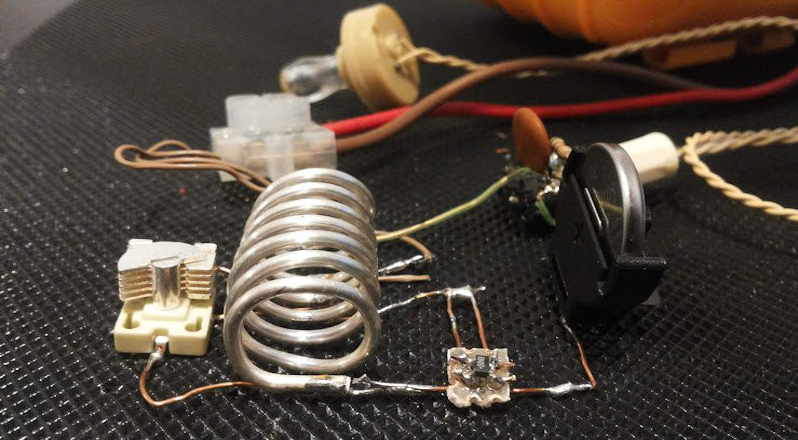A rite of passage in decades past for the electronics experimenter was the crystal radio. Using very few components and a long wire antenna, such a radio could pick up AM stations with no batteries needed, something important in the days when a zinc-carbon cell cost a lot of pocket money. The days of AM broadcasting may be on the wane, but it’s still possible to make a crystal set that will resolve stations on the FM band. [Andrea Console] has done just that, with a VHF crystal set that whose circuit also doubles as a regenerative receiver when power is applied.
The key to a VHF crystal set lies in the highest quality tuned circuit components to achieve that elusive “Q” factor. In this radio that is coupled to a small-signal zero voltage threshold FET that acts as a detector when no power is applied, and the active component in a regenerative radio when it has power. The regenerative radio increases sensitivity and selectivity by operating at almost the point of oscillation, resulting in a surprisingly good receiver for so few parts. Everyone should make a regenerative radio receiver once in their life!















Interesting! Made lots of crystal radios as a youngun. Always thought VHF was not an option, although I imagined an FM detector was possible, just that there weren’t any FM stations at low enough frequencies.
I have 2 sound powered handsets like they use on battleships. Will these work for listening on a crystal radio
It’s called a “slope detector.”
https://www.electronics-notes.com/articles/radio/modulation/fm-frequency-demodulation-slope-detector-discriminator.php
zero-voltage FET?? i never imagined such a thing
I remember making regenerative radios to listen to aircraft (and FM radio) at the nearby airport when I was a kid. IRIC the circuit used a single transistor and a tunnel diode and worked very well.
to be fair, ATC voice AM close to airports is Loud, with a capital L.
I built a crystal radio (AM) as a kid (Thanks, Dad!) and a seemingly simple project like this would be right up my street. I’m guessing “yes” but it looks still necessary to source a high impedance earphone?
In general, yes, but if you live close enough to a transmitter, you can even drive a low impedance headset or a speaker. All you need is impedance matching, by means of a transformer. At least, I’ve read some do that with good results. Look here https://billydiy.blogspot.com/2021/08/portable-crystal-radios-with-speakers.html
I’m old enough to remember seeing a crystal set with a steel “cat whisker” and a galena crystal, although by then a germanium diode was the way to go.
When I was a kid I once built a microphone out of a cigar box, two razor blades, and the carbon rod from a battery. I had read about it in some magazine, which said that it was super sensitive. The razor blades stood upright on the cigar box and the carbon rod just rested lightly across the two razor blades. A battery and a headphone was connected in series with the razor blades. Amazingly enough, it really was very sensitive. I built it in my dad’s garage and at one point a fly landed on the cigar box. I could literally and clearly hear its foot steps.
The real, properly adjusted crystal detector can still outperform a glass diode, however. Not just in terms of sensitivity, but the demodulated signal on the scope can have a smoother shape, better characteristics etc. It’s still worth experimenting with a real detector, thus.
I’ve built all of these in my youth, using real crystal and cat’s whisker, and a crude superset to listen to ATC at London Heathrow, some 50 miles away. Good times, much learning by experimenting as there was no internet